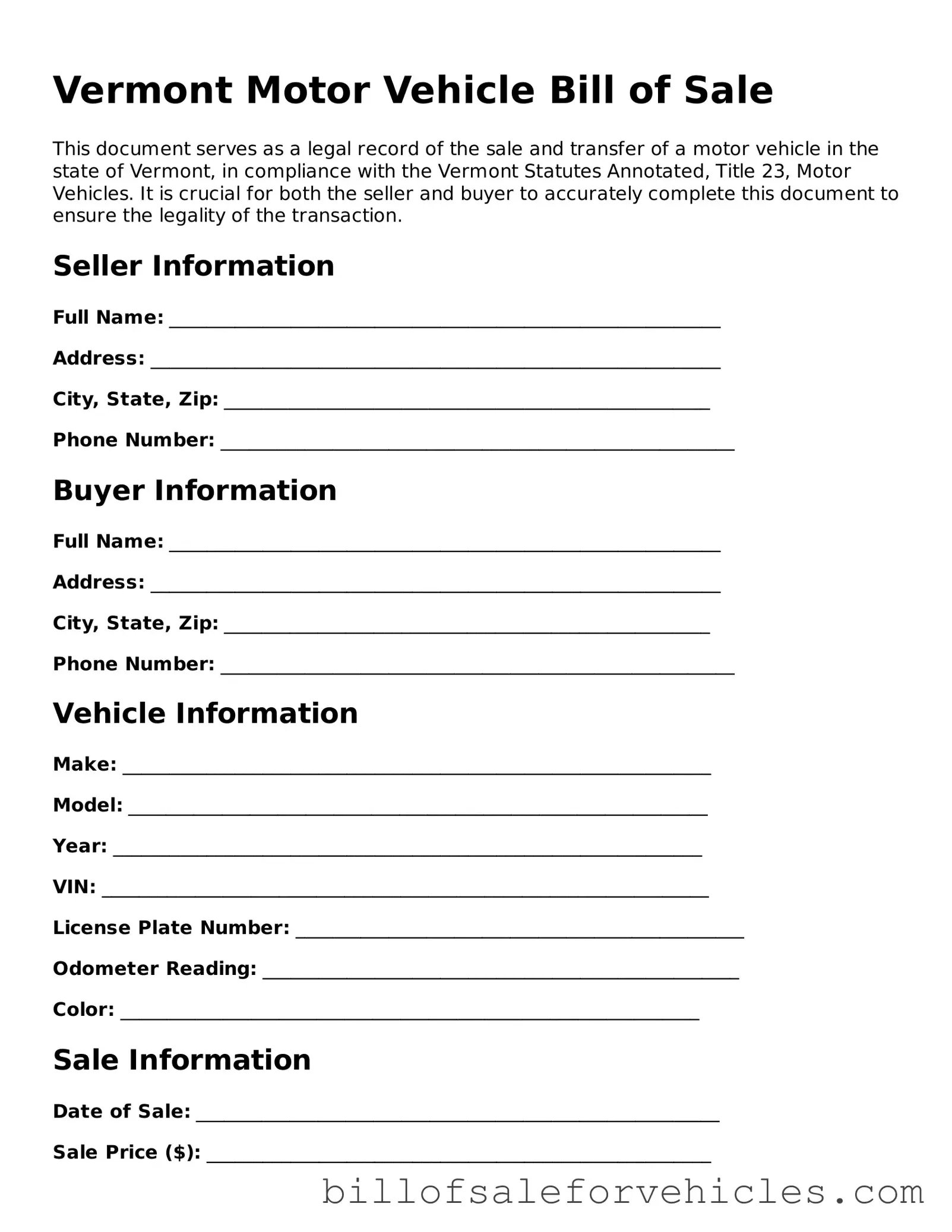Vermont Motor Vehicle Bill of Sale
This document serves as a legal record of the sale and transfer of a motor vehicle in the state of Vermont, in compliance with the Vermont Statutes Annotated, Title 23, Motor Vehicles. It is crucial for both the seller and buyer to accurately complete this document to ensure the legality of the transaction.
Seller Information
Full Name: ___________________________________________________________
Address: _____________________________________________________________
City, State, Zip: ____________________________________________________
Phone Number: _______________________________________________________
Buyer Information
Full Name: ___________________________________________________________
Address: _____________________________________________________________
City, State, Zip: ____________________________________________________
Phone Number: _______________________________________________________
Vehicle Information
Make: _______________________________________________________________
Model: ______________________________________________________________
Year: _______________________________________________________________
VIN: _________________________________________________________________
License Plate Number: ________________________________________________
Odometer Reading: ___________________________________________________
Color: ______________________________________________________________
Sale Information
Date of Sale: ________________________________________________________
Sale Price ($): ______________________________________________________
This document certifies that the seller has received full payment for the vehicle described above and transfers ownership to the buyer. The seller affirms that the information provided is accurate to the best of their knowledge and that the vehicle is sold in "as is" condition, with no guarantees or warranties implied.
Signatures
Seller's Signature: ______________________________________ Date: _______
Buyer's Signature: ________________________________________ Date: _______
Note: It is recommended that both parties keep a copy of this document for their records and to facilitate the registration of the vehicle. Providing false information intentionally on this document may lead to penalties under state law.
